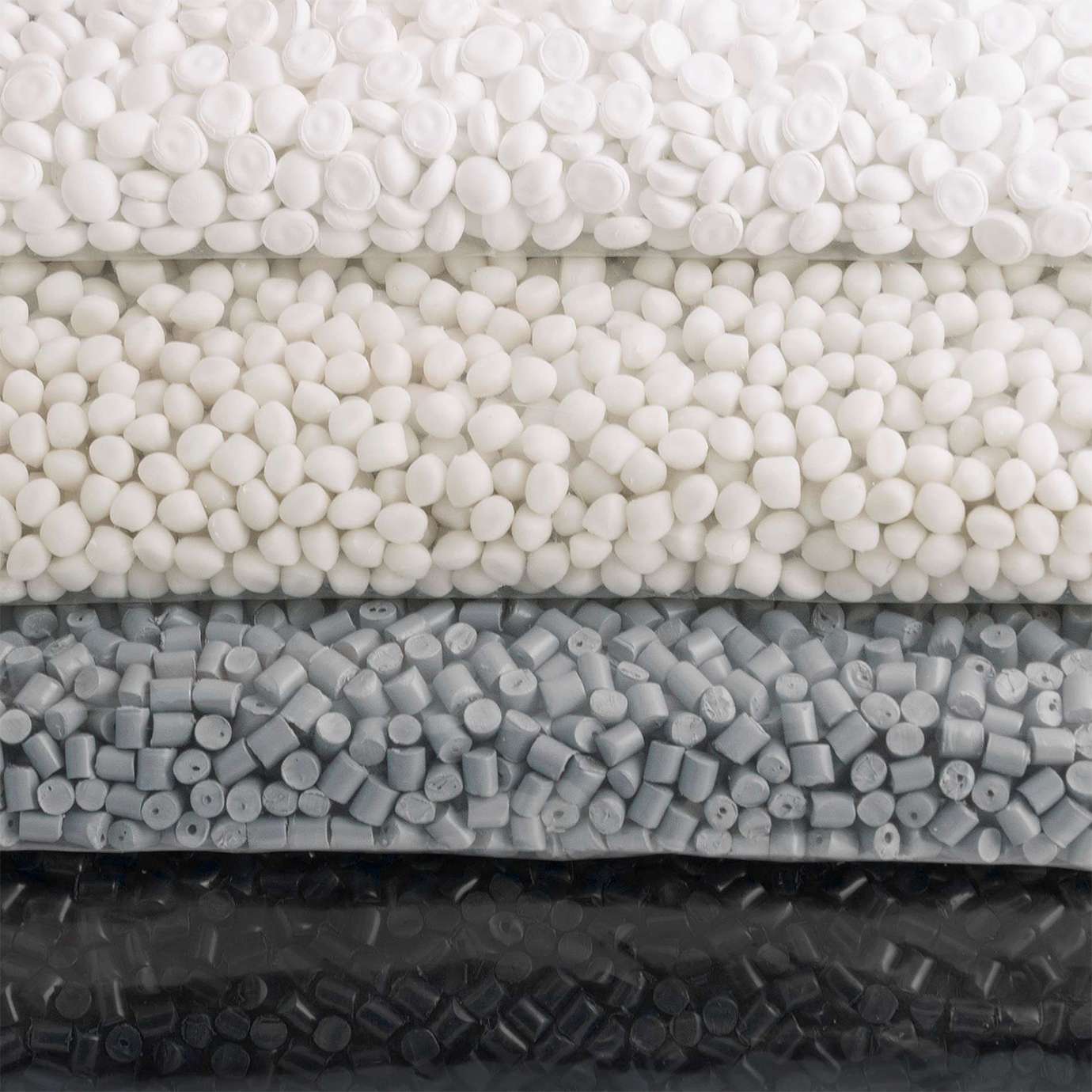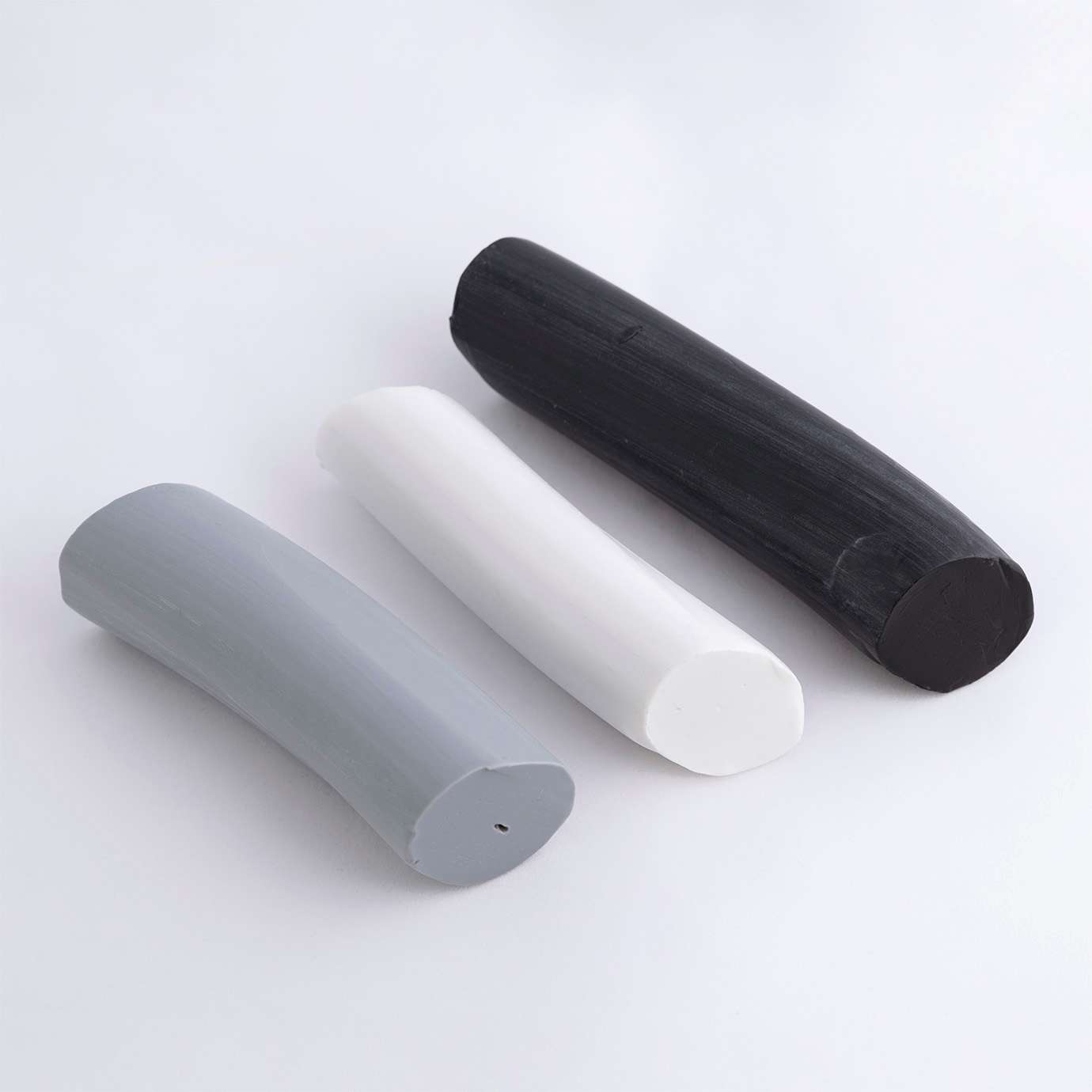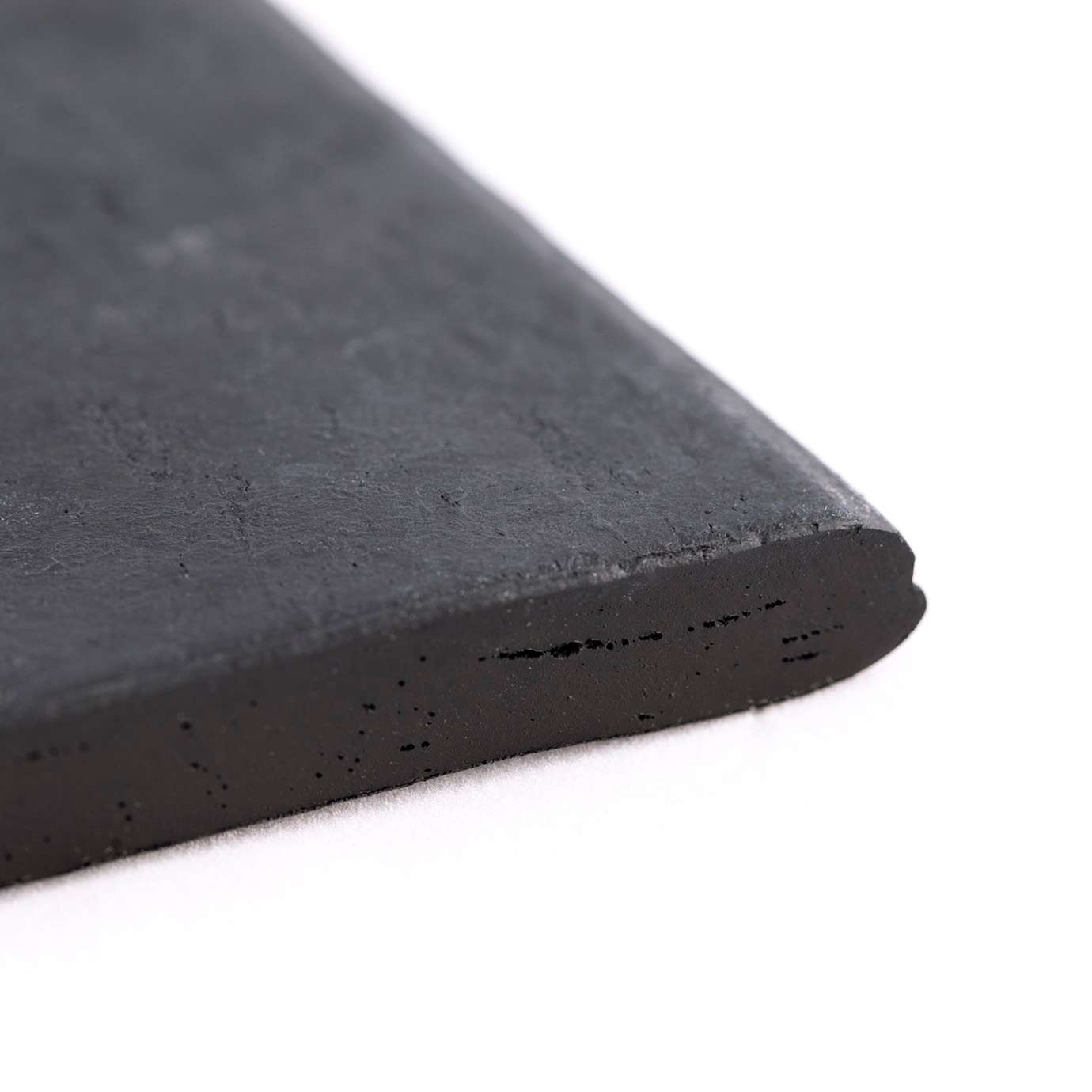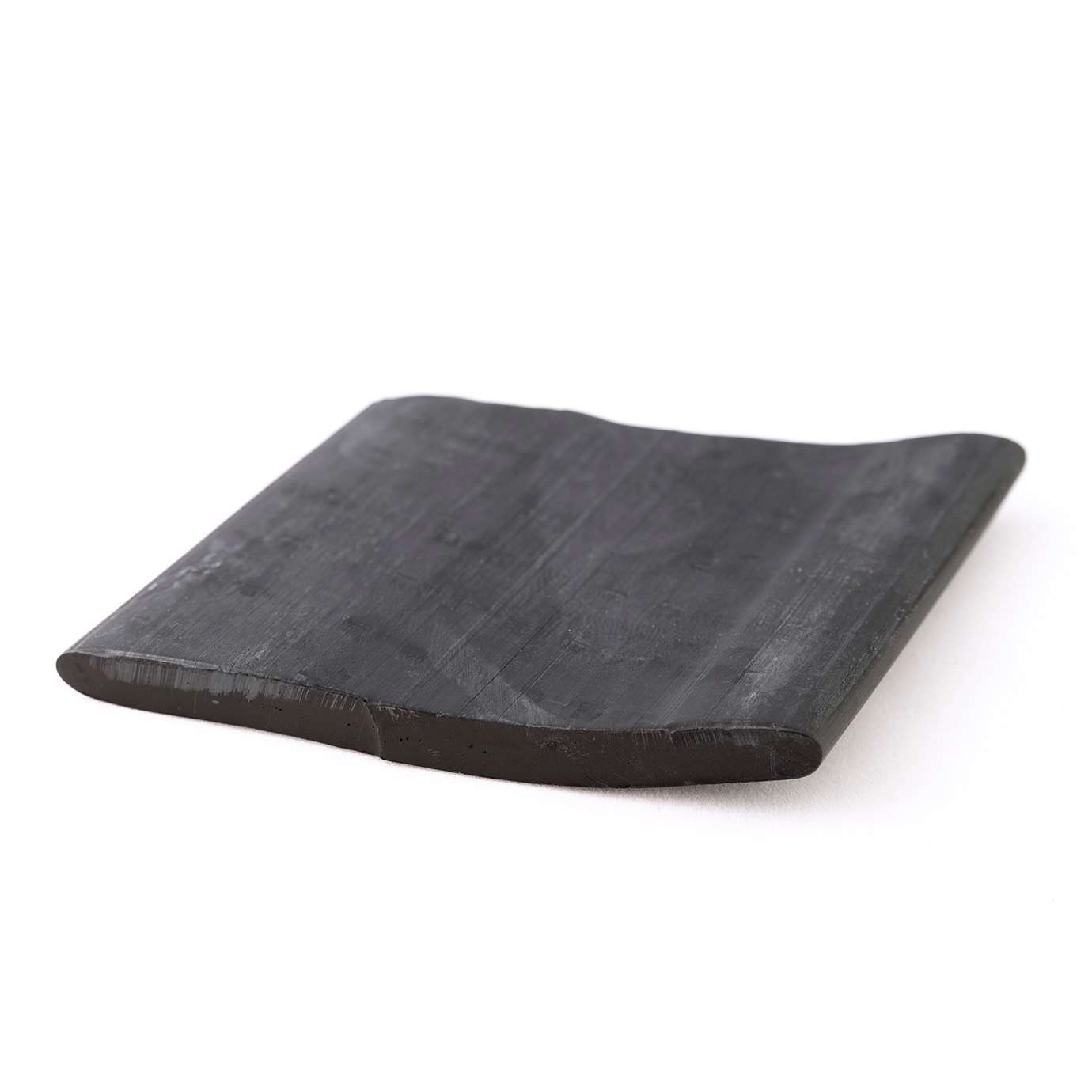Continuous product development – high-quality materials
We use either rubber, TPE (thermoplastic elastomer) or silicon to manufacture our sealing profiles. All material is certified. We know, what the material consists of and where the raw material is from. We use mainly Finnish raw material. The choice of the material is influenced by its purpose of use and, for example, weather conditions. We can also manufacture sealing profiles in different colours.
EPDM rubber
TPE
Silicon
EPDM cellular rubber
NBR rubber
Measurements, qualities and tolerances
On a mobile device, you can press and hold to move around the data table.
Diameter tolerances
| Basic measurement | Classification | ||||
| E1 | E2 | E3 | E4 | ||
| mm | mm | +-mm | +-mm | +-mm | +-mm |
| 0 | 2,5 | 0,20 | 0,35 | 0,50 | 0,80 |
| 2,5 | 4,0 | 0,25 | 0,40 | 0,70 | 1,00 |
| 4,0 | 6,3 | 0,35 | 0,50 | 0,80 | 1,30 |
| 6,3 | 10 | 0,40 | 0,70 | 1,00 | 1,60 |
| 10 | 16 | 0,50 | 0,80 | 1,30 | 2,00 |
| 16 | 25 | 0,70 | 1,00 | 1,60 | 2,50 |
| 25 | 40 | 0,80 | 1,30 | 2,00 | 3,20 |
| 40 | 63 | – | 1,60 | 2,50 | 4,00 |
| 63 | 100 | – | 2,00 | 3,20 | 5,00 |
Cut length tolerances
| Basic measurement | Classification | ||||
| L1 | L2 | L3 | L4 | ||
| mm | mm | +-mm | +-mm | +-mm | +-mm |
| 0 | 40 | 0,7 | 1,0 | 1,6 | 3,2 |
| 40 | 63 | 0,8 | 1,3 | 2,0 | 4,0 |
| 63 | 100 | 1,0 | 1,6 | 2,5 | 5,0 |
| 100 | 160 | 1,3 | 2,0 | 3,2 | 6,3 |
| 160 | 250 | 1,6 | 2,5 | 4,0 | 10,0 |
| 250 | 400 | 2,0 | 3,2 | 5,0 | 12,5 |
| 400 | 630 | 2,5 | 4,0 | 6,3 | 16,0 |
| 630 | 1000 | 3,2 | 5,0 | 10,0 | 20,0 |
| 1000 | 1600 | 4,0 | 6,3 | 12,5 | 25,0 |
| 1600 | 2500 | 5,0 | 10,0 | 16,0 | 32,0 |
| 2500 | 4000 | 6,3 | 12,5 | 20,0 | 40,0 |
| < 4000 | 0,16% | 0,32% | 0,5% | 1,0% | |
Cellular rubber strips
Diameter tolerances
| Basic measurement | Classification | ||||
| E1 | E2 | E3 | |||
| mm | mm | +-mm | +-mm | +-mm | |
| 0 | 2,5 | 0,35 | 0,50 | 0,80 | |
| 2,5 | 4,0 | 0,40 | 0,70 | 1,00 | |
| 4,0 | 6,3 | 0,50 | 0,80 | 1,30 | |
| 6,3 | 10 | 0,70 | 1,00 | 1,60 | |
| 10 | 16 | 0,80 | 1,30 | 2,00 | |
| 16 | 25 | 1,00 | 1,60 | 2,50 | |
| 25 | 40 | 1,30 | 2,00 | 3,20 | |
| 40 | 63 | 1,60 | 2,50 | 4,00 | |
| 63 | 100 | 2,00 | 3,20 | 5,00 | |
Cut length tolerances
| Basic measurement | Classification | ||||
| L1 | L2 | L3 | |||
| mm | mm | +-mm | +-mm | +-mm | |
| 0 | 40 | 1,0 | 1,6 | 3,2 | |
| 40 | 63 | 1,3 | 2,0 | 4,0 | |
| 63 | 100 | 1,6 | 2,5 | 5,0 | |
| 100 | 160 | 2,0 | 3,2 | 6,3 | |
| 160 | 250 | 2,5 | 4,0 | 10,0 | |
| 250 | 400 | 3,2 | 5,0 | 12,5 | |
| 400 | 630 | 4,0 | 6,3 | 16,0 | |
| 630 | 1000 | 5,0 | 10,0 | 20,0 | |
| 1000 | 1600 | 6,3 | 12,5 | 25,0 | |
| 1600 | 2500 | 10,0 | 16,0 | 32,0 | |
| 2500 | 4000 | 12,5 | 20,0 | 40,0 | |
| < 4000 | 0,32% | 0,50% | 1,00% | ||
Rubber product’s tolerances
Tolerance tables are according to the standards ISO 3302. Different tolerance guides can be applied to products with varying measurements. Extruded rubber expands as it passes through the die and after vulcanization it changes shape and shrinks. The expansion and shrinkage factors depend upon the rubber type and the quality of the mixture. Products made from soft rubber require greater tolerances than those made from harder qualities.
EPDM rubber
EPDM (ethylene propylene diene monomer rubber) is the most commonly used raw material in sealing profiles. It is a widely tested and well-known material, from which we have had very good experiences through the years. EPDM is available in black.
TPE
TPE (thermoplastic elastomer) is an advanced and totally recyclable raw material. It combines the properties of vulcanized and thermoplastic rubbers. TPE provides a lot of possibilities for product design. Our stock colours are white, beige, brown, grey and black. We can manufacture the products with different levels of hardness.
TPE is highly resistant to chemicals excluding organic solvents and aromatic oils. Its capability to insulate electricity is good and it endures UV radiation and ozone well. TPE is also highly resistant to weather strains (cold resistance -50 degrees centigrade, heat resistance +120 degrees centigrade). TPE is also available in food safe quality.
In multicomponent profiles, the best qualities of TPE’s different materials (hard, elastic, cell) can be combined into a high-quality seal, which is both easily installed and optimal for insulation. Using hard material prevents it from stretching during installation and shrinking in time.
Silicon
Silicon is the most expensive raw material. It has the best temperature resistance properties compared with other materials. Its resilience is excellent. It withstands humidity, pressure, steam, different types of chemicals and many oils. It also withstands sunlight, ozone and has good properties for insulating electricity. Silicon is a UL 94 VO fire classified material, which also fulfils the quality requirements of railways.
EPDM cellular rubber
- Excellent cold and heat properties
- Water-resistant
- Good residual pressure and resistance to ageing
- Soft and resilient
- Ozone and UV proof
- Manufactured from black EPDM cellular rubber
- Service temperatures: -55 °C…+100 °C
- A closed cell
NBR rubber
NBR (nitrite rubber) is one of the oldest synthetic rubbers. It was developed for conditions requiring excellent resistance to oil.
PLACEHOLDER
JUST A PLACEHOLDER





